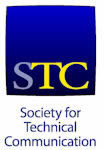 Based on the results of its recent governance survey of members, the Board of Directors of the Society of Technical Communication (STC) voted to approve a“Partial Pass-Through” model for community funding to take effect for the 2013 membership year. Under this model, all communities—chapters and Special Interest Groups (SIG)—will receive a fixed amount of funding per member—$15 per chapter member and $4 per SIG member—regardless of projected expenses and income, or estimated reserves at year end. All funding under the newly adopted model will be contingent upon the community’s submission of a budget by the 31 October deadline and will take effect for the 2013 membership year. The annual budget review process will begin in November following the submission deadline.
Based on the results of its recent governance survey of members, the Board of Directors of the Society of Technical Communication (STC) voted to approve a“Partial Pass-Through” model for community funding to take effect for the 2013 membership year. Under this model, all communities—chapters and Special Interest Groups (SIG)—will receive a fixed amount of funding per member—$15 per chapter member and $4 per SIG member—regardless of projected expenses and income, or estimated reserves at year end. All funding under the newly adopted model will be contingent upon the community’s submission of a budget by the 31 October deadline and will take effect for the 2013 membership year. The annual budget review process will begin in November following the submission deadline.
Board members and senior staff assembled for the monthly Board of Directors teleconference, where the survey results were presented and the funding action approved. Treasurer Aiessa Moyna presented the results of the governance survey, which had more than 200 participants from the US, Canada, Europe and Australia, and indicated that the preference for Option 2, the Partial Pass-Through model (more than 50% of respondents) were consistent across all regions and with feedback received from membership over the last several months. The Flat Funding model, listed as Option 3 on the survey, also received strong support (45% of respondents), while the Community-Managed model (Option 4) and the Reserves Target model (Option 1, and the current funding model) received strong opposition at 79.9% and 56.9% respectively.
According to the announcement on the STC website, “The knowledge-based governance survey used to inform the Board decision was the latest in a series of efforts by Society leaders to engage and collaborate with STC members in identifying the best funding model for communities. Other outreach efforts included a community webinar, sessions at the 2012 STC Summit, one-on-one conversations with community leaders, LinkedIn and MySTC discussions, and review of the proposed models with the Community Affairs Committee.”
Visit the STC website, or read the STC Notebook post.


